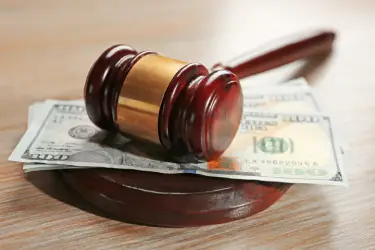The value of a wrongful death claim can be affected by several variables. One of the more consistent ones is shared fault. This factors in the possibility that the deceased was partially responsible for their demise. When this happens, the value of the wrongful death claim may decrease accordingly. However, in New York, even if there is a shared fault, the family can still file a claim for the negligent death of a loved one. Let’s examine how this happens.
What is Comparative Fault?
To understand how shared fault affects the value of a wrongful death case, it is first essential to be familiar with comparative negligence. Comparative fault is a legal doctrine that allows for apportioning blame among parties in a civil suit. This assumes that each party involved in the accident was partially at fault. In other words, no one is totally without blame for the incident. Generally, it is the jury or court that decides just how much blame to assign. In a pure comparative negligence state such as New York, the court will apportion fault among the parties regardless of how much each individual is responsible. So, even if the deceased is 99 percent at fault for their death, the family can still recover damages from the other party. The amount of damages recovered would simply be reduced by the percentage of fault attributed to the deceased.
Examples of Comparative Fault in New York?
To qualify as comparative fault in a motor vehicle accident case, more than one driver must be negligent. Let’s look at an example. Suppose two drivers are heading toward the George Washington Bridge area on Broadway near 96th Street. If one driver is recklessly speeding and the other doesn’t signal they’re changing lanes, the speeder might not be able to slow down in time to avoid a crash. Who is at fault? The jury makes this determination. The degree of culpability depends on several factors such as the vehicle’s speed. The non-signaling driver is somewhat at fault, but so is the speeding motor vehicle operator. This is a complex situation that requires an in-depth investigation. It is up to the jury to make this determination.
How Does Comparative Fault Affect Damages?

The monetary value of recoverable damages in a wrongful death case reduces by an amount equal to the percentage of fault attributed to the deceased. So, if the court finds that the decedent was 20 percent at fault for their own death, then the family can only recover 80 percent of the damages to which they would otherwise be entitled.
What if the Deceased is 100% at Fault?
In some cases, the court may find that the deceased is 100 percent at fault for their death. In these cases, the family will not be able to recover any damages from the other party. However, this does not mean that the family will not be able to recover any damages at all. The family may still be able to recover damages from their insurance policy, depending on what type of coverage they have.
What are Some Examples of Shared Fault?
There are many ways in which shared fault can play a role in a wrongful death case. Some common examples include:
- The deceased was speeding at the time of the accident.
- The decedent was driving distracted when the crash occurred.
- The deceased was not wearing a seatbelt at the time of the accident.
- The decedent was under the influence of drugs or alcohol when the collision happened.
Comparative Negligence in a Lawsuit
In a wrongful death lawsuit, the family (plaintiffs) must prove that the defendant’s negligence caused their loved one’s demise under Article 14-A of New York Civil Practice Laws and Rules. The jury must decide if the defendant was responsible. If the decedent was partially to blame for the accident, the lawyers for the defendant must provide the jury with ample evidence for them to decide there was shared negligence. Now, the question becomes how much responsibility each party has.
How Can an Attorney Help with Comparative Fault?
Your attorney will investigate the accident scene for evidence of fault. Even if the defendant’s counsel tries to say that the decedent was partially at fault, they must prove it, and your attorney has a chance to provide evidence to the contrary. That is why witness statements and police reports as well as videos from surveillance cameras are essential. So are accident reconstruction reports. At Platta Law, we’ve assisted numerous clients when a family member died. We offer compassionate service and work hard to help them through this difficult time. If you would like to talk to one of our wrongful death lawyers, give us a call at (212) 514-5100, or contact us online to schedule a free case review.




